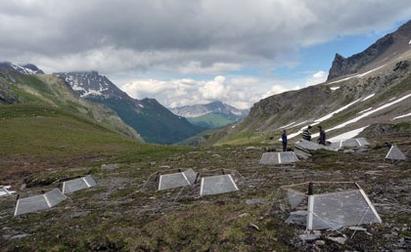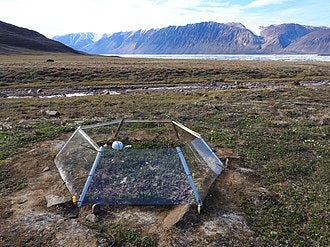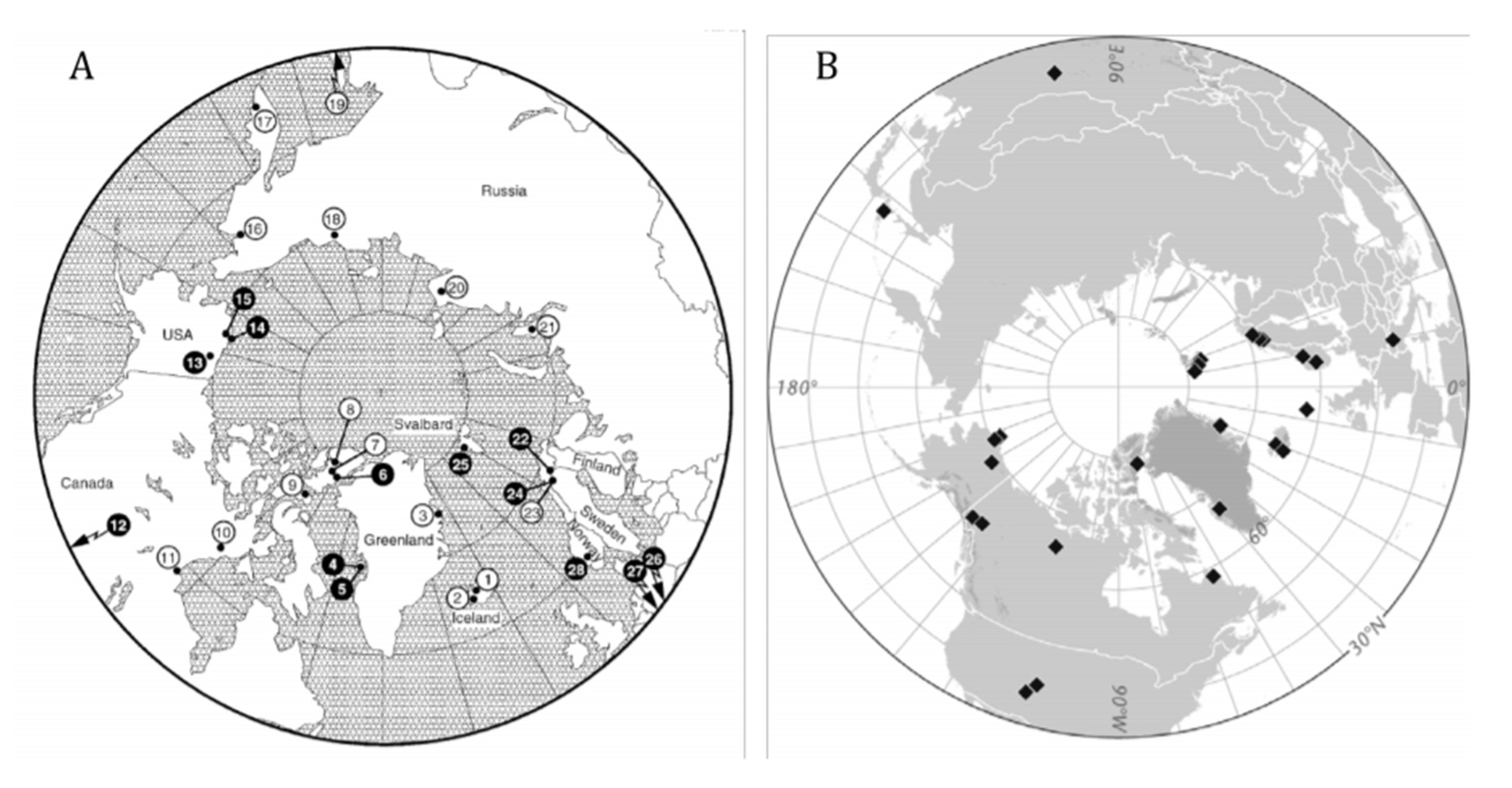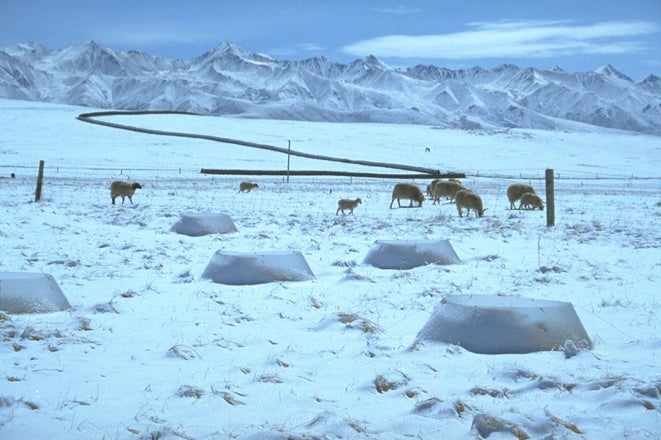ITEX
International Tundra Experiment
The International Tundra Experiment (ITEX) was established in late 1990 as a MAB-NSN initiative (Man-And-the-Biosphere, Northern Sciences Network) at a meeting of arctic tundra ecologists, as a response to predictions that the human‐enhanced greenhouse warming would occur earliest and most intensely at high latitudes. An ITEX Resolution laid out the context and the general principles and protocols that were developed for measurements, coordination, and data sharing and synthesis. The focus was on responses of major circumpolar vascular plant species and on plant responses due in part to questions from northern residents across the Arctic about the effects of predicted climate change on species used and of interest to them. It was also deemed important to establish the network using relatively simple measurements of phenology, growth, and reproduction on populations of important plant species, as this would increase the participation and allow researchers to establish sites with minimal expense.
Arctic and sub-Arctic alpine tundra sites were established in Canada, Sweden, Greenland, U.S. (Alaska), Norway (mainland and Svalbard), Finland and Iceland. Sites were identified in Russia in the mid 1990s, but funding and other circumstances prevented research from being established. The number of sites identified as part of ITEX network varied, depending on the activity and, ultimately, the funding available to each principal investigator. Most of the initial results generated within ITEX related to the response of single species, but from the field season of 1995 the experimentation was scaled up to include community-level responses. There were also ITEX research efforts dealing with plant phenotypic plasticity and quantitative genetics of some of the target species.

The Swiss ITEX site in Val Bercla, Mulegns, Canton of Grisons. The vegetation consists of alpine cushion plants, dwarf willows, grasses and sedges monitoring vegetation changes over time in warmed and in control plots. Photo courtesy of the Swiss Federal Institute for Forest, Snow and Landscape Research (WSL).
Scientific Objectives:
The initial objective of ITEX was to monitor phenology, growth and reproduction in major circumpolar vascular plant species in response to climate variations and environmental manipulations at sites throughout the tundra biome. ITEX monitored the performance of plant species and communities on a circumpolar basis in undisturbed habitats with and without environmental manipulations. The manipulations involved passive warming of tundra plots in open‐top chambers (OTCs), and manipulating snow depth to alter growing season length. Standard protocols were developed for measurements, experimental design and statistical analyses, and published in an ITEX Manual. The standard methods ensured comparable data were collected at all sites.

Close-up view of an ITEX Open Top Chamber (OTC) at Alexandra Fiord, Ellesmere Island, Canada (Photo courtesy of Wikipedia)
Project Operations:
The ITEX sites were established in all Arctic countries (except Russia). The synthesis of long-term change in tundra vegetation involved 46 sites; a combination of control plots at ITEX sites and other studies involving repeated measurements of tundra vegetation. The experimental design at most sites involved randomly selecting target species and assigning a treatment (warming Open Top Chambers (OTC) or control). In many sites, the experiments were established in tundra communities along a moisture gradient to capture the variability at the site, and the sample size was between 6 and 20 plots/treatment. Individual plants of major species were then tagged and followed for phenology (both vegetative and reproductive), growth and reproduction throughout the growing season. Specific protocols for measurements of these variables are outlined in the ITEX Manual. Vegetation composition and species abundance were assessed in permanently marked areas within each plot using a standard point-frame method, which involved a standard sized quadrat (e.g. 1 square meter) with 100 points. This method was adopted to enable detection of small-scale change in vegetation, but also to reduce observer bias and error and to ensure monitoring could be accomplished by researchers with minimal training.

(A) Map of 27 original ITEX sites (courtesy of Anna Arft) and (B) map of 24 ITEX sites included in the synthesis of vegetation change in warming experiments across the tundra biome (courtesy of Sarah Elmendorf)
Measurements of physical variables (temperature, snow depth, thaw depth, light, humidity, soil moisture, nutrient availability) were generally made in a subset of plots in each community type. The ITEX Manual specifies the types of measurements that should be conducted at the plot level, and it was up to individual researchers to determine the level and intensity of these measurements based on their resources. Most sites also had an automated observation station or were close to an official weather station. The ITEX network was composed of researchers who had chosen to participate and adopt the experimental design and methods; hence, a truly “grass-roots” network. Each site was maintained by the individual researcher based on the resources they could access, usually through national funding agencies. The network was coordinated by a steering committee, which was originally composed of representatives from each Arctic country involved, a student representative elected by participating graduate students, and led by an elected Chairperson.
Data collected:
The variables measured at ITEX sites varies depended on the investigator and the particular project funding, however, the basic data collected at most sites included: meteorological (temperatures, solar radiation, wind speed and direction, etc.); plant phenology, growth and reproduction for major species; composition and abundance of species; soil characteristics (physical and chemical variables, moisture, nutrient availability); and in some sites, net ecosystem production.

Winter conditions at an ITEX Site (Photo courtesy of Colorado State University)
Project Outcome:
ITEX is a successful network of coordinated distributed experiments throughout the Arctic tundra that has contributed to the monitoring of change in the circumpolar region and beyond for over 20 years. The long-term success of the network has been a combination of clear planning at the outset, standardized methods and experimental designs, dedicated and inspired researchers, and a willingness and desire to share information to gain new insights on the structural and functional responses of tundra systems to climate change. The collaborative approaches to research and monitoring in ITEX and the experience gained through long-term studies will help to ensure ITEX researchers continue to make important contributions to observe, record and understand the changes in the Arctic. Observations and research of ITEX (both arctic and sub-arctic biome sites) continue to this day.
Further information and details on ITEX can be found at:
Greg Henry, Robert Hollister, Ingibjörg Svala Jónsdóttir, Kari Klanderlud, Ulf Molau, Steve Oberbauer, Patrick Webber, Philip Wookey, 2013. “The International Tundra Experiment: An Arctic Monitoring Network”, White Paper for the 2013 Arctic Observing Summit, Vancouver, Canada.